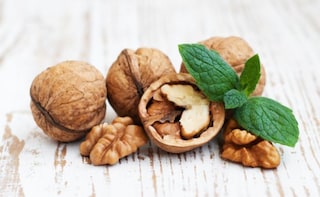Calculating the calorie content of tree nuts like walnuts and almonds based on methods developed over a century ago should be reviewed as they are "inaccurate", according to a top US government researcher.
He said the discrepancy found by the researchers could be attributed to evolving methods for calculating calories in foods. Scientists in the 1950s grouped walnuts and other tree nuts with other plant-based foods, such as dry beans, legumes and peas, and estimated that each gram of protein or carbohydrate in those foods contained an average of 4 calories of energy, while each gram of fat contained an average of 9 calories.Baer said the system can work well for estimating calories in mixed diets involving several foods, but not so well for estimating specific calories for certain foods individually, such as tree nuts. Few studies over the years have focused on how individual foods are absorbed by the body, and little scientific data has been collected on tree nuts, he said.
He said the discrepancy found by the researchers could be attributed to evolving methods for calculating calories in foods. Scientists in the 1950s grouped walnuts and other tree nuts with other plant-based foods, such as dry beans, legumes and peas, and estimated that each gram of protein or carbohydrate in those foods contained an average of 4 calories of energy, while each gram of fat contained an average of 9 calories.Baer said the system can work well for estimating calories in mixed diets involving several foods, but not so well for estimating specific calories for certain foods individually, such as tree nuts. Few studies over the years have focused on how individual foods are absorbed by the body, and little scientific data has been collected on tree nuts, he said.
Advertisement
For the latest food news, health tips and recipes, like us on Facebook or follow us on Twitter and YouTube.
Advertisement
